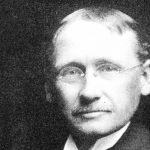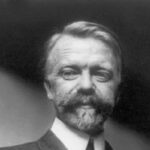PRACTICE Coaching Model

PRACTICE coaching model: in this article the PRACTICE coaching model, further developed by Stephan Palmer, is explained in a practical way. In addition to what it is, this article also highlights the background, how to use this coaching approach, its benefits, leadership coaching and a brief summary. After reading you will understand the basics of this coaching tool. Have fun reading!
What is the PRACTICE coaching model?
The PRACTICE coaching model is a combination of problem identification and a solution-oriented approach to coaching. This simple model is very easy to use, making it a popular tool among coaches. Throughout the coaching period, so called ‘scale questions’ are used to monitor how the client feels and where he or she stands in regard to their problem. PRACTICE is an acronym consisting of letters that stand for the different phases of the coaching process. These are:
- Problem identification
- Realistic and relevant objectives
- Alternative solutions
- Target best feasible option
- Implementation of…
- Chosen solution
- Evaluation
History PRACTICE coaching model
The PRACTICE coaching model was born from the previous work of various academics and coaching professionals. The most important source of inspiration for the model comes from dr. Barbara Wasik. She developed a problem-solution model consisting of seven steps. These are:
- Problem identification
- Goal selection
- Generation of alternatives
- Consideration of consequences
- Decision making
- Implementation
- Evaluation
Stephan Palmer subsequently adapted this model and transformed it into the PRACTICE coaching model.
In this new model, he used troubleshooting and implementation methods identified by McKergow and Jackson in 2007.
The most important difference is the focus on solutions and implementation. This gives the client the opportunity to talk about themselves without a direct focus on the problem. This way, the coach will learn about their client quicker.
There are many different coaching models. The most popular being the GROW model. GROW is an acronym for Goal, Reality, Options and Will. The ACHIEVE model is also widely used by coaches.
Libri developed the POSITIVE coach model and Jackson and McKergow describe a similar approach in their OSKAR model.
How can I use the PRACTICE coaching model?
Problem identification (P)
In the first step of the model, the goal is to clarify the client’s problem. In addition to this problem clarification, this is also the phase during which the coach takes their time to really understand their client. Various questions can help in gaining this clarity and understanding:
- What would you like to talk about today?
- What exactly is the problem?
- What are the implications of this problem?
- How will you notice your problem has been resolved?
- On a scale of 1 to 10, how capable do you feel able to solve the problem yourself?
Realistic and relevant objectives (R)
The second phase of the PRACTICE coaching model revolves around developing relevant and specific objectives related to the previously identified problem. It is possible to use the SMART objectives for this, but not necessarily. However, make sure the objectives follow the most important SMART criteria. Questions that can help during this phase include:
- What does the client hope to gain from the sessions?
- Is this objective realistic, measurable, etc?
Alternative solutions (A)
The third phase of the PRACTICE coaching model represents the ability to identify a wide range of alternative solutions. Solutions, in this sense, are meant to be those that actually guide the client to their identified goal. This phase of the process cannot be rushed. The main question should be: and what else? The more possible solutions that can be identified, the better.
- What are my options?
- And what else?
Consequences (C)
The fourth phase of the PRACTICE coaching model revolves around considering the consequences associated with each of the previously identified solutions. In this phase, research what could happen after the implementation of certain solutions. Consequences can be both positive and negative, and both should be explored. The more solutions considered, the more informed a decision can be made. In this phase, use a scale of 1 to 10 with 1 being very ineffective and 10 extremely effective.
Ask yourself the following question:
- To what extent are the solutions effective?
Target best feasible option (T)
In this fifth phase of the model, the focus lies on the most feasible options. What distinguishes one viable option from another? What is the best option for my client? Which is the most practical? Include as many factors as possible that can influence the feasibility of the solutions. Are they resources? Time? Chances and opportunities? Risks and dangers?
Other questions that can be asked are:
- Does my client feel comfortable with this solution?
- What other options would you like to explore?
Implementation of the chosen solution (I)…
The sixth and almost last phase of the model revolves around implementing the solution chosen in the previous step. Essentially, this means that the solution is divided into smaller pieces that can more easily be implemented into a step-by-step plan. This process needs to be led by the client. This is important because the client will eventually implement the solution during the last step.
Evaluation (E)
During the last phase of the coaching process, it is assessed whether the implementation of the solution, and therefore the entire coaching process, was a success or not.
In this phase, we, again, use a scale of 1 to 10 with 1 being very unsuccessful and 10 extremely successful. This phase is also meant to reflect on how the process went and whether the client is on the right track to achieve their goals. It is up to the coach to determine whether the client needs everything in order to achieve success in the future.
Questions that may take on a central role during the evaluation phase include:
- How successful was this period?
- Please give a mark between 1 and 10.
- What did you learn from this period?
- Does the client need more coaching?
- Is there another problem that should be discussed?
Benefits of coaching
The benefits of coaching are extensive. Countless people who have been or are being coached throughout their lives report that coaching has had a positive impact on their personal or professional lives. Some benefits include:
- Becoming more self-reliant
- Better ability to set own goals
- More capable of taking matters into your own hands
- Effectively contribute within an organisation’s team
- Become more responsible
- Become more productive
- Communicate more effectively
Given the wide range of benefits, it is not surprising that coaching is very popular in the business world. Coaching offers a great value for the personal development of employees, something that ultimately also benefits the organisation. For example, employees may experience a lack of self-confidence.
Previously, the solution would be to send them to an assertiveness course and hope that that’s that. But currently, we are aware these courses retain very little effectiveness in the long run. The employees’ behaviour can become more self-assured in the short term, but long-term change must arise from internal thought processes.
Therefore coaching is better suited to achieve this than a one-off course. Models such as the POSITIVE coaching model and the GROW coaching model should in business always be applied under the guidance of a neutral person. Clients are not supposed to say things because they are afraid of the consequences of their words.
It is important that managers and other executives do not underestimate the impact of coaching.
Proper coaching can create fundamental change, possibly leading to the need to develop a new way of working or a different way of dealing with the status quo. When employees gain more self-confidence, they become more assertive and resilient. Managers should always take the people into account, but it is especially important during times of change.
Coaching also has benefits that can be directly linked to organisations themselves, rather than just personal benefits. These include:
- Coaching enables employees to learn to take responsibility
- Coaching increases employee involvement in the organisation
- Coaching improves individual performance as a result of personal growth
- Coaching helps identify employees with very high potential
- Coaching helps identify both strengths and weaknesses which can be used for further development
- Coaching helps to motivate employees and gives them the opportunity to be the best version of themselves
The PRACTICE Coaching Model and Leadership coaching
Leadership coaching is a development process that is used by a coach to help develop a leader to become even more effective. It is often the case that leaders have all the capabilities they need to achieve a good result but are just not able to make the difference they need to or want to. Leaders then do not need more training but rather the much more personal leadership coaching.
Leadership coaching is the tailor-made process of a collaboration between coach and client or, in this case, a leader.
The role of the coach is the same as in coaching models such as GROW, POSITIVE or the PRACTICE coaching model: to help identify obstacles that prevent a certain goal from being achieved.
Coaches do not solve the problems but rather help the client to find the solution themselves. The coach guides this process and ensures the client always has someone to lean on.
PRACTICE coaching model in short
The PRACTICE coaching model is based on Wasik’s seven solution-solving steps.
The easy to use model can be helpful in situations in which a problem and solution play a central role. The development of this model is accredited to Stephan Palmer. Alternatives to the PRACTICE coaching model are the GROW, POSITIVE and OSCAR coaching models.
The first letter of the acronym PRACTICE stands for problem identification. This is also the first phase of the coaching process when the PRACTICE method is applied. The purpose of this first step is to gain clarity about the problem and to develop an understanding of the situation.
The second phase revolves around developing relevant and specific objectives related to the previously identified problem.
The SMART goals method can be applied for this.
The third letter, A, stands for alternative solutions. It is important to develop as many alternative solutions as possible so that a broader picture can be developed about the elaboration of these different options. This is done in the fourth phase: consequences. This is where we ask the question: to what extent are the solutions effective?
The fifth phase revolves around identifying the best viable option. Which option best suits your client? What risks or opportunities are associated with the alternatives?
These matters need to be clarified during the fifth phase. The sixth and almost last phase of the PRACTICE model revolves around implementing the solution. This is fully dependent on the client and is designed in such a way that it best suits the person themselves. The last step is the evaluation phase. This phase analyses the period over which the coaching took place and assesses whether the client needs more support and guidance.
Coaching is popular in business. For a reason: it helps employees develop more confidence and also increases employees’ involvement in their work. Additionally, it helps to facilitate personal growth and makes identifying talent and potential easier.
Now it is your turn
What do you think? Are you familiar with the explanation of the PRACTICE coaching model? Do you think the explanation was clear enough? Would you now be able to implement the process yourself? Do you have any experience with coaching? What other coaching models are you familiar with? Which model suits you best? Do you have any tips or additional comments?
Share your experience and knowledge in the comments box below.
More information
- Brochin, H. A., & Wasik, B. H. (1992). Social problem solving among popular and unpopular children. Journal of abnormal child psychology, 20(4), 377-391.
- Dembkowski, S., & Eldridge, F. (2003). Beyond GROW: A new coaching model. The international journal of mentoring and coaching, 1(1), 4-8.
- Onchwari, G., & Keengwe, J. (2008). The impact of a mentor-coaching model on teacher professional development. Early Childhood Education Journal, 36(1), 19-24.
- Palmer, S. (2011). Revisiting the P in the PRACTICE coaching model. The Coaching Psychologist, 7(2), 156-158.
- Wasik, B. (1984). Teaching parents effective problem-solving: A handbook for professionals. Unpublished manuscript. Chapel Hill: University of North Carolina.
How to cite this article:
Janse, B. (2021). PRACTICE Coaching Model. Retrieved [insert date] from toolshero: https://www.toolshero.com/management/practice-coaching-model/
Original publication date: 06/10/2021 | Last update: 09/03/2023
Add a link to this page on your website:
<a href=”https://www.toolshero.com/management/practice-coaching-model/”>toolshero: PRACTICE Coaching Model</a>












